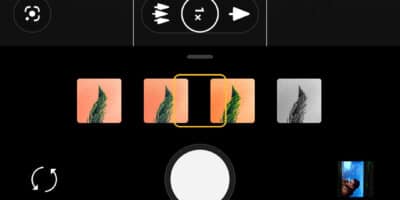When we talk about USB, USB Type-A is the first thing that appears in mind. It is a rectangular-shaped connector used in every device, from computers and laptops to Smartphones. Micro USB, Mini, Type B, and Apple’s Lightning are some of the other USB standards. Latterly, a new standard called USB “Type-C” has appeared and is used in most of the Ultrabooks, and premium Smartphones extensively.
Why USB Type-C? How is it Different from Other USB Standards?
USB standards have many flaws. One of them is when users connect the cable to the device incorrectly which can damage the USB port. USB Type-C counters this flaw with a reversible connector and no “up” or “down” orientation. Moreover, its smaller form factor makes it easy for OEMs to include it in thin devices.
Other advantages include faster data transfer rates and handling higher voltage. USB-C results in faster-charging speeds. However, before you rush to buy a Type-C compatible device, you need to note that not all the USB Type-C ports designed similarly. And, here’s when USB Power Delivery comes into the picture.
What Is Power Delivery?
Power Delivery is used for manipulating more power and allows a variety of devices to charge fast over a USB connection. It works by a synchronous conversation between two devices to arrange a power agreement so they can settle on how much power can be drawn from the charger. Starting at just 5 volts, Power Delivery can be configured up to 20V.
![USB power delivery 1 1 - USB Power Delivery: A Step In The Right Direction? [Explained] USB power delivery](https://techdipper.com/wp-content/uploads/2020/02/USB-power-delivery-1-1.jpg)
A regular USB Type-C cable can handle up to 60W and will go up to 100W. Another cool thing about Power Delivery is, it has no set direction based on circuit or connection and allows for power to flow both ways. This implies if both the phones support PD, you can charge a device by connecting both of them with a Type-C cable.
ALSO READ: Stuffcool USB-C To 3.5mm Aux Digital Audio Adapter Review: Hefty Price, Brings Sturdy Hardware!
To charge the device using Power Delivery, you need to buy the right charger which supports it. You can go ahead if the rating in the “PD charger” is greater than or equal to the power rating of the original charger. The speed also depends on the number of ports the charger or power bank has.
How Is PD Different From Other Fast Charging Technologies?
Power Delivery aims at powering bulkier devices like laptops of which Smartphones can also take advantage. Other technologies like Qualcomm’s Quick Charge, OnePlus’s Dash Charge, etc.. are OEM specific. As a result, Dash Charge is well optimized as it is (only) used in OnePlus devices. A variety of devices uses PD, and while it’s still good, it cannot rival the efficiency of other fast charging technologies.
![USB power delivery 2 - USB Power Delivery: A Step In The Right Direction? [Explained] USB power delivery](https://techdipper.com/wp-content/uploads/2020/02/USB-power-delivery-2.jpg)
Imagine a world with one charging solution and no messy cables in your backpack. With USB Type-C, you don’t need to carry different cables to charge your devices. Large OEMs should consider shifting to USB Type-C in their devices without arguing to promote their proprietory connectors like Appl (*cough). Companies have started adopting Type-C as the leading charging standard, which is good news for us.
Which USB standard does your phone have? And what do you think about USB Power Delivery, good move? Let us know in the comment section below.
BONUS VIDEO
For the latest tech news, follow TechDipper on Twitter, Facebook, Telegram, Instagram, and subscribe to our YouTube channel.

![What is USB Power Delivery - USB Power Delivery: A Step In The Right Direction? [Explained] USB Power Delivery](https://techdipper.com/wp-content/uploads/2020/02/What-is-USB-Power-Delivery_-816x490.png)


![Wifi 6 - Wi-Fi 6 And Wi-Fi 6E: Everything You Need To Know [Explained] Wi-Fi 6](https://techdipper.com/wp-content/uploads/2020/05/Wifi-6-400x200.jpg)
![Type C vs Micro USB - USB Power Delivery: A Step In The Right Direction? [Explained] Type-c vs Micro usb - "USB power delivery explained"](https://techdipper.com/wp-content/uploads/2020/02/Type-C-vs-Micro-USB.png)